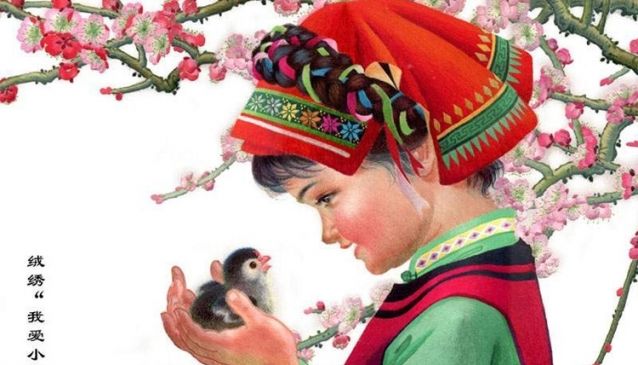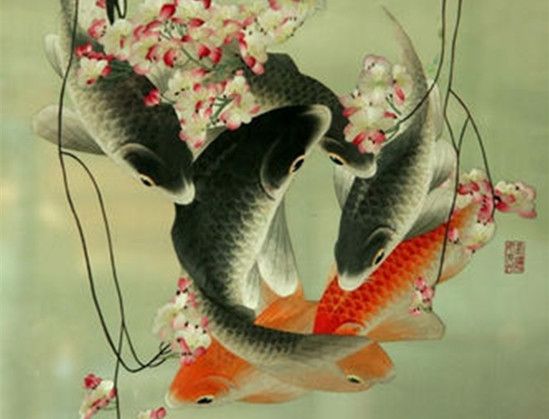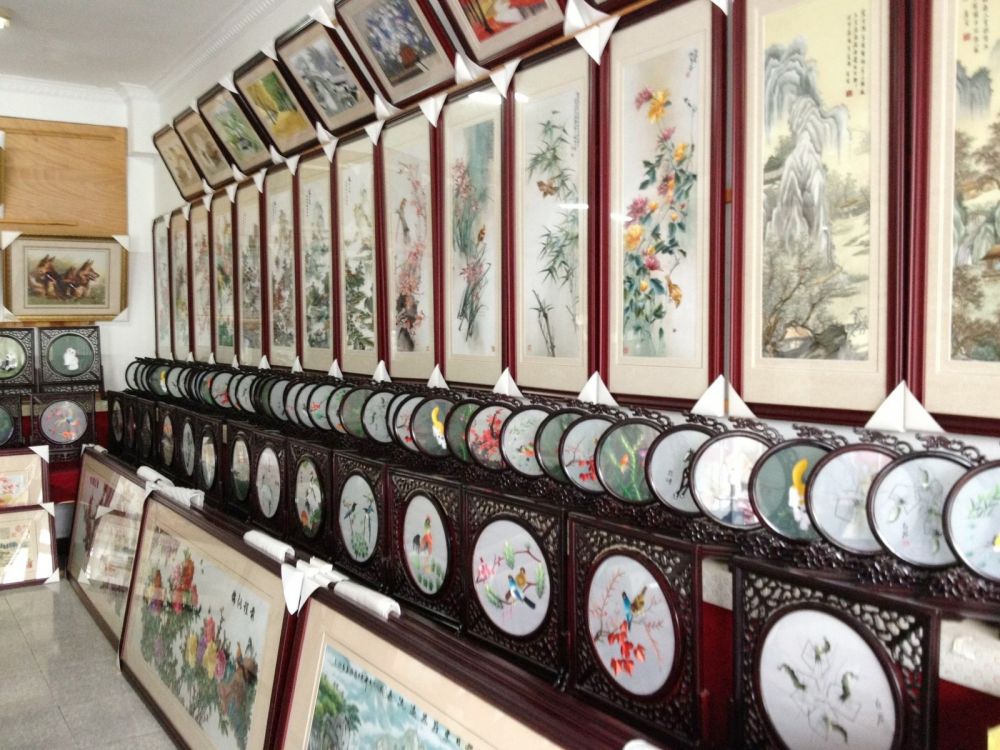苏州刺绣

Suzhou silk embroidery originated in the Jiangsu province. Chinese silk embroidery artwork is sometimes referred to as a "silk painting," "needle painting," or "thread painting," although no paint is used in the process.
Color and tone differentiation is achieved by alternating colors of silk thread. The overall effect is that of an actual painting when observed from a distance, but upon close inspection one can see the individual silk threads.
The first step in the process is to transfer the design onto a sheet of silk or satin "canvas," using a pinprick technique. The canvas is then stretched tight on a "hoop." Then the artist must carefully choose the different colors of dyed thread. To create subtle gradations of tone, the silk artist may split a single silk thread into several thinner threads, embroidering layer upon layer of varying colored threads to achieve the final effect. Thicker or thinner threads can also be used to create a subtle textural difference.

The final step in the process is to scald the finished embroidery at a high temperature. Scalding brings out the "sheen" that is characteristic of a fine silk embroidery artwork. When viewed from different angles, the art seems to shimmer and change appearance. Many of these silk embroideries can be viewed from both sides, and are mounted in a two-sided wood frame.
Silk embroidery art is an extremely labor-intensive endeavor, as the entire surface of the silk canvas is hand embroidered. The embroidery artist can work for up to one year on a single piece of art, and large canvasses (4 feet or larger) may require the work of several artists. Large pieces can cost as much as twenty thousand dollars, depending on the complexity of the subject-matter and the amount of fine detail.

Popular traditional motifs will incorporate birds, lotus flowers, and landscapes, with animals such as the goldfish, tiger, or mythical dragons and the phoenix. Sadly, as young people migrate to the larger cities in search of opportunity, the craft of silk-embroidery is slowly disappearing.